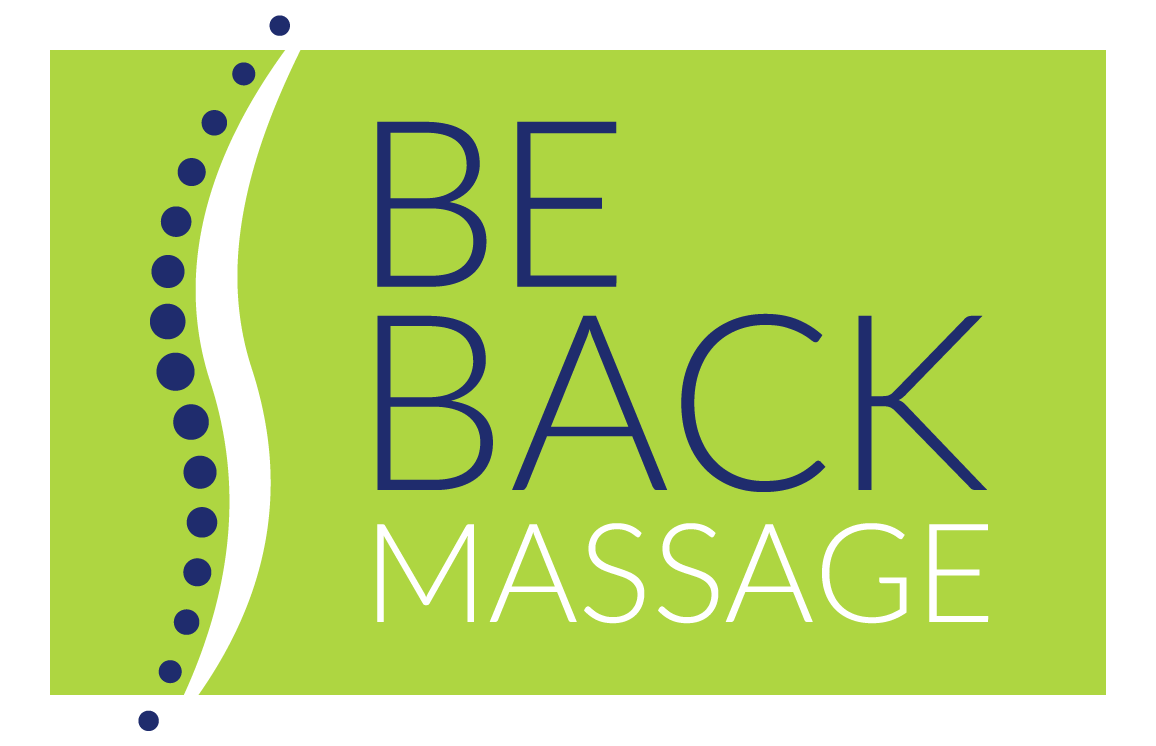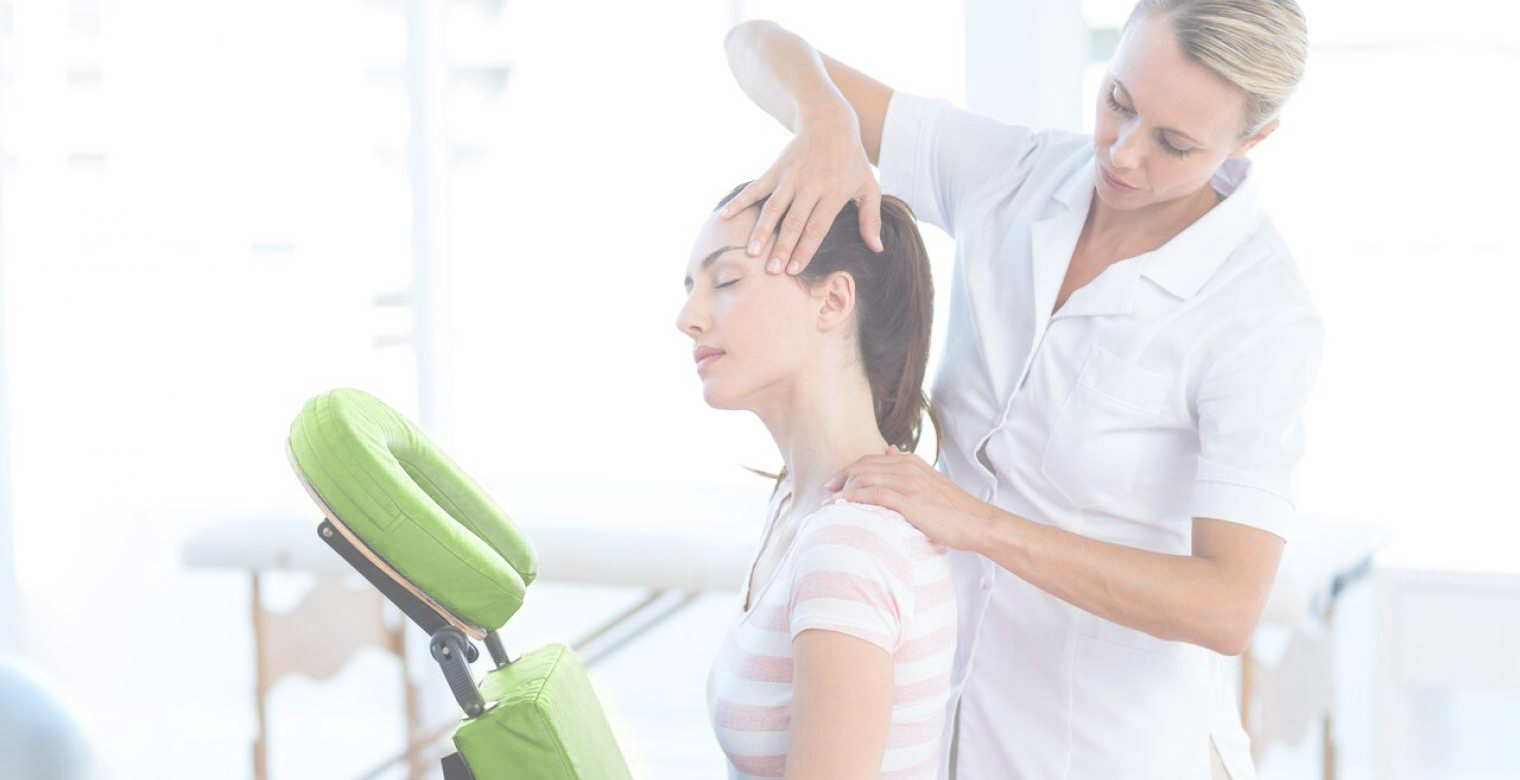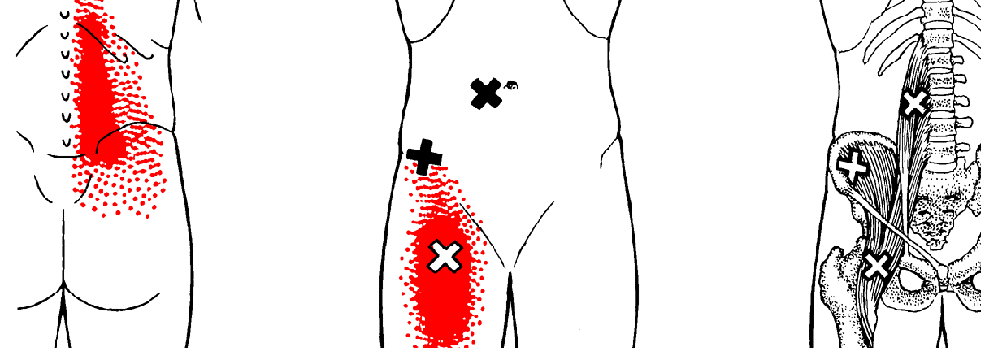The psoas muscles are the deepest muscles in your core. They attach from your 12th thoracic vertebrae to your 5th lumbar vertebrae, through your pelvis, and then finally attach to your femurs. In fact, they are the only muscles that connect your spine to your legs.
The psoas muscle may be the most important muscle in your body. That’s because your psoas muscles are the primary connectors between your torso and your legs. They are three bundles ( musculus iliacus, musculus psoas major and musculus psoas minor) They affect your posture and help to stabilize your spine. weak psoas muscles can cause many of the surrounding muscles to compensate and become overused.
A good functioning psoas can prevent lower back problems, it stabilizes the stomach muscles and has indirect influence on the breathing. Limited movement (sitting all day) or over use (for example extreme sit-ups) can tense up the psoaas muscle, physical and emotional trauma have been linked to psoas tension
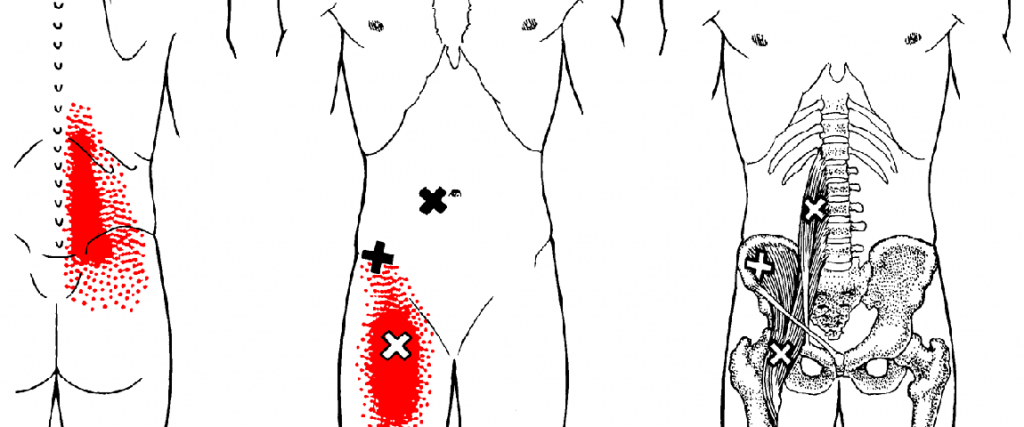
Mid-low back pain? When the pain gets worse when you are standing, it is diffucult to get out of a deep-seated chair and you feel pain in the front of the thigh you may have trigger points in the iliopsoas muscles.
A trigger point is a sensitive area in the muscle or connective tissue (fascia) that becomes painful when compressed
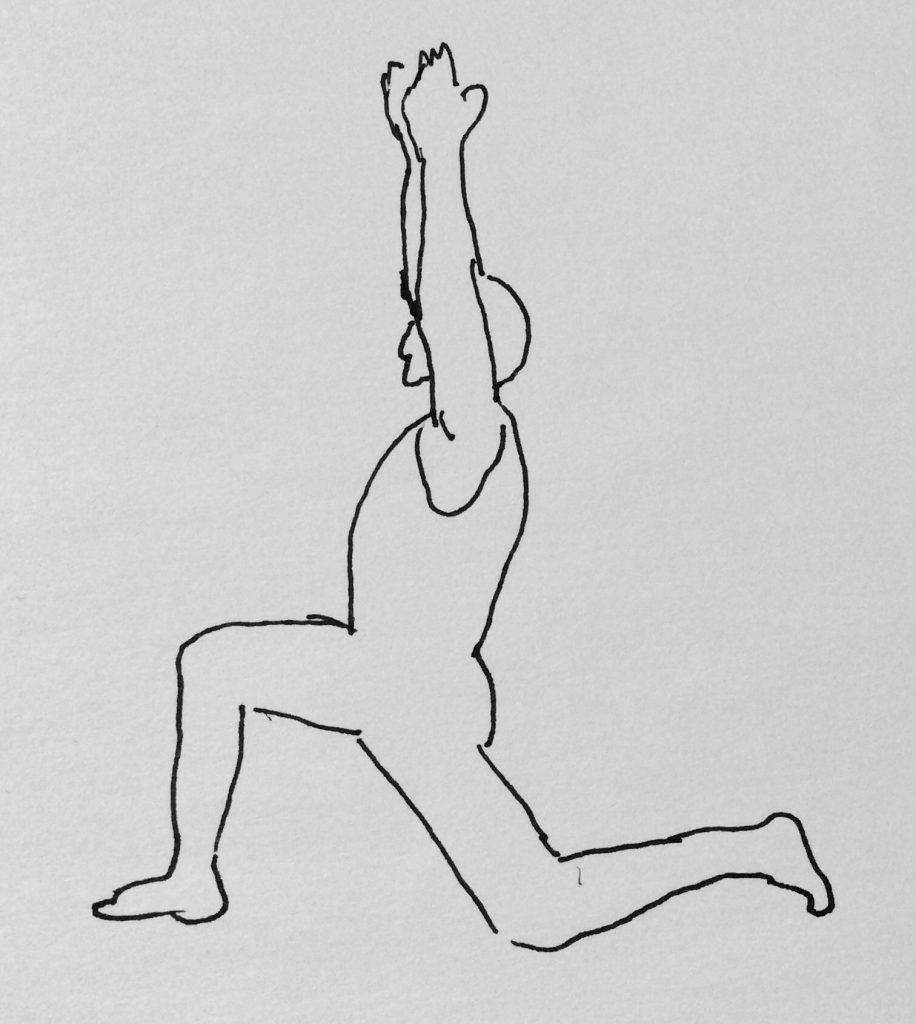
STRETCH:
This lunge with the back knee down is a great posture that will help to lengthen the psoas of the back leg.
One leg forward with the knee bent at 90° above the heel.
The back knee down and under the hip or slightly behind it.
As you exhale: Maintain length in the lumbar spine, while allowing the pelvis to sink forward and down . The hands can rest on the front thigh, or the arms can reach upwards..
Stay in the posture while breathing slowly.
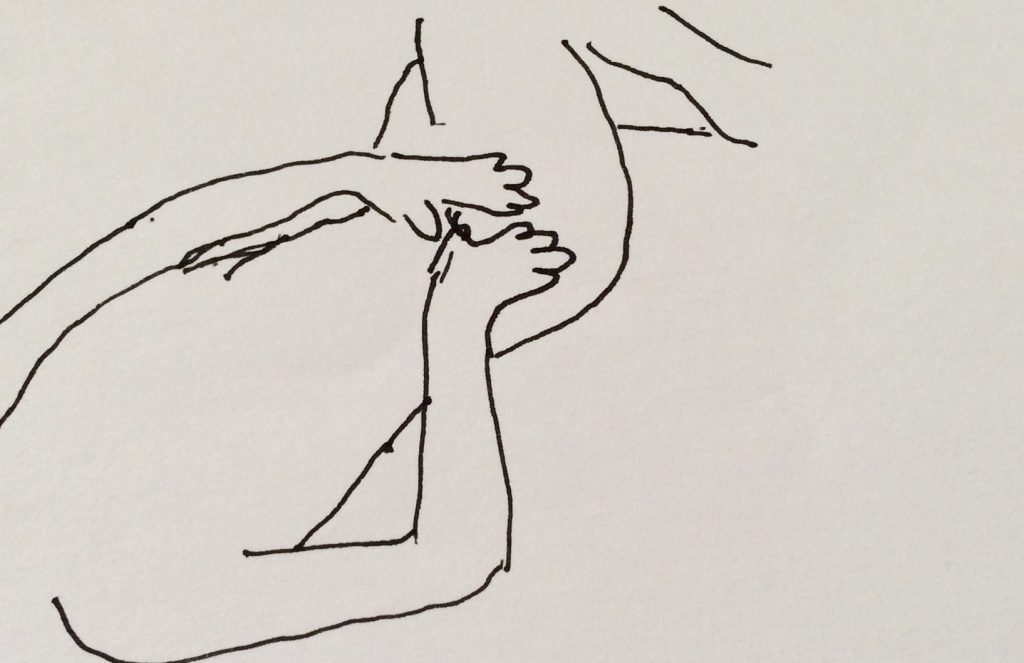
Triggerpoint massage:
See the picture above where the x’s are drawn on the body.
You will start to search in that area for a tight muscle sting that shoots away when you go transvers over it, when you find that string than feel the sensitive spot in that string, now you found the triggerpoint.
For the triggerpoint at the hip putt both knees sideways to relax the muscle.
- use both hands to support so to not hurt the fingers
- Start slowly stroking over the sensitive trigger point
- Give pressure by each exhale, release pressure by inhalation
- Give about 6 strokes per point.
- Repeat 2 to 3 times a day.
